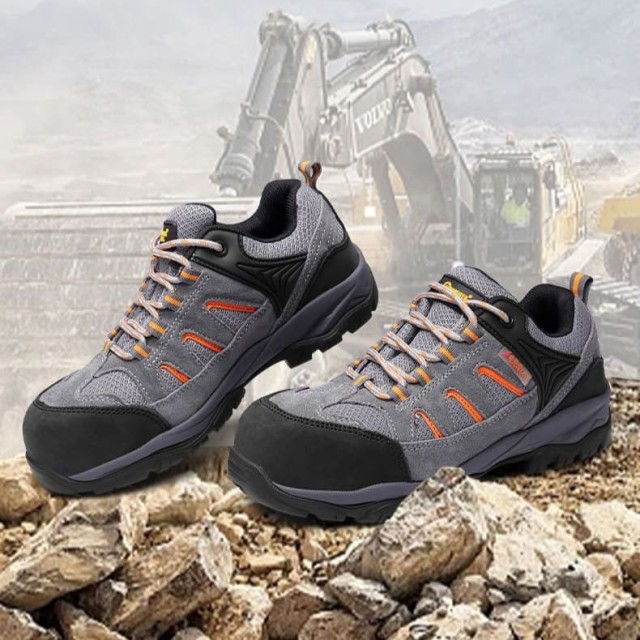For workers balancing budget constraints with job site demands, PVC work boots present a compelling—but often misunderstood—option. While they can't match premium materials in every scenario, these lightweight, waterproof boots excel in specific environments where chemical resistance and short-term wear dominate requirements.
PVC in Work Footwear: A Material Reality Check
Chemical Resistance vs Physical Durability
PVC’s polymer structure provides inherent protection against oils, acids, and alkalis—a key advantage in food processing or chemical handling roles. However, this comes with trade-offs:
- Impact resistance meets basic ASTM F2413 standards (75 lbs force threshold), but prolonged heavy impacts may cause premature cracking
- Abrasion resistance falls short of rubber or composite materials, making them less ideal for construction or mining
- Flex fatigue occurs faster with frequent bending, a concern for ladder work or crouching tasks
Temperature Tolerance in Industrial Environments
Extreme conditions reveal PVC’s limitations:
- Below freezing: Material stiffens, reducing traction and increasing slip risks
- Above 100°F: Softening occurs, compromising sole integrity on hot surfaces
- Thermal cycling (repeated hot-cold shifts) accelerates material breakdown
"In our poultry processing audits, PVC boots lasted 4-6 months with daily sanitizer exposure—half the lifespan of rubber alternatives but at 40% lower cost." — Plant Safety Manager, Georgia
Waterproofing Trade-Offs
Moisture Trapping and Breathability Issues
The same impermeability that keeps liquids out also traps sweat:
- Bacterial growth risk increases after 3+ hours of continuous wear
- Moisture-wicking liners help but can’t match breathable membranes
- Anti-microbial treatments become essential for all-day use
Short-Term vs All-Day Wear Scenarios
Optimal use cases emerge when matching duration to material properties:
| Wear Time | Recommended Applications |
|---|---|
| Under 4 hrs | Chemical spill response, wastewater inspection |
| 4-6 hrs | Food prep stations, light agricultural work |
| 6+ hrs | Not advised—switch to breathable alternatives |
Cost-Effective Use Cases
Food Processing Plant Validation
A Midwest pork facility reduced footwear costs by $12,000 annually by implementing PVC boots for:
- Wet deck areas requiring daily high-pressure washing
- Short-shift sanitation crews working 3-hour cleaning cycles
- Temp workers during seasonal production spikes
Seasonal Agricultural Advantages
For harvest crews facing mud and pesticide exposure:
- Per-acre cost savings outweigh durability concerns (typical replacement every season)
- Easy cleaning suits crop rotation between muddy fields and wash stations
- Lightweight advantage reduces fatigue during repetitive row walking
Upgrade Your Safety Footwear Strategy
3515 Footwear equips distributors and bulk buyers with purpose-built PVC solutions for wet environments. Our chemical-resistant formulations and reinforced toe options deliver compliant protection where budgets matter. [Contact our industrial specialists] to optimize your PPE procurement.
Key Takeaway: PVC works best as a specialized tool—not universal footwear. Pair them with task-specific protocols, and they’ll outperform their price point in the right conditions.
Related Products
- Wholesale Customizable Suede Safety Boots - Puncture-Proof with Velcro Closure
- Safety Footwear Wholesale Manufacturer for Custom OEM/ODM Production
- Wholesale Anti-Smash & Puncture-Proof Safety Shoes Custom Manufacturing for Brands
- Wholesale Safety Footwear Manufacturer for Bulk & Custom OEM Orders
- Customizable Anti-Smash Safety Boots for Wholesale & Private Label Manufacturing
Related Articles
- Matching Men’s Work Shoe Safety Technologies to Workplace Hazards
- Steel Toe Work Boots: Balancing Safety and Comfort for Demanding Jobs
- How to Choose Work Boot Materials for Maximum Safety and Durability
- How to Choose Work Boots That Balance Safety, Comfort, and Durability for Your Job
- How to Choose Work Boots That Match Your Job's Safety Demands














